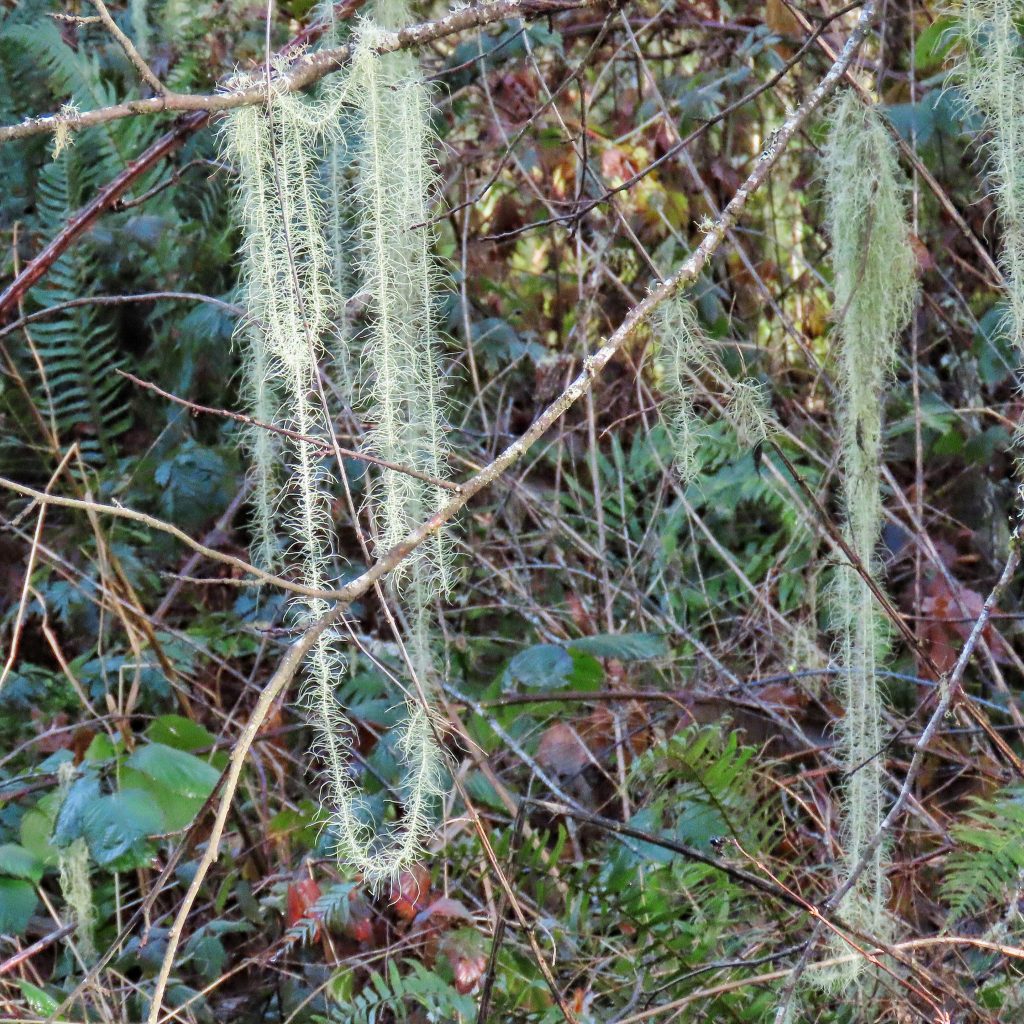
This is one of the rare lichens with an accepted common name. Usnea as a whole are often called beard lichens, or old man’s beard, but every resource I looked at that gave any common names listed Methuselah’s Beard for Usnea longissima, and most of them only listed this one.
Speaking of names, the genus of this species has been called into question. A 2004 paper by Japanese researchers placed it in its own monotypic genus, Dolichousnea, based on DNA testing. But there is apparently resistance, and many peer reviewed papers from recent years still place it in Usnea.
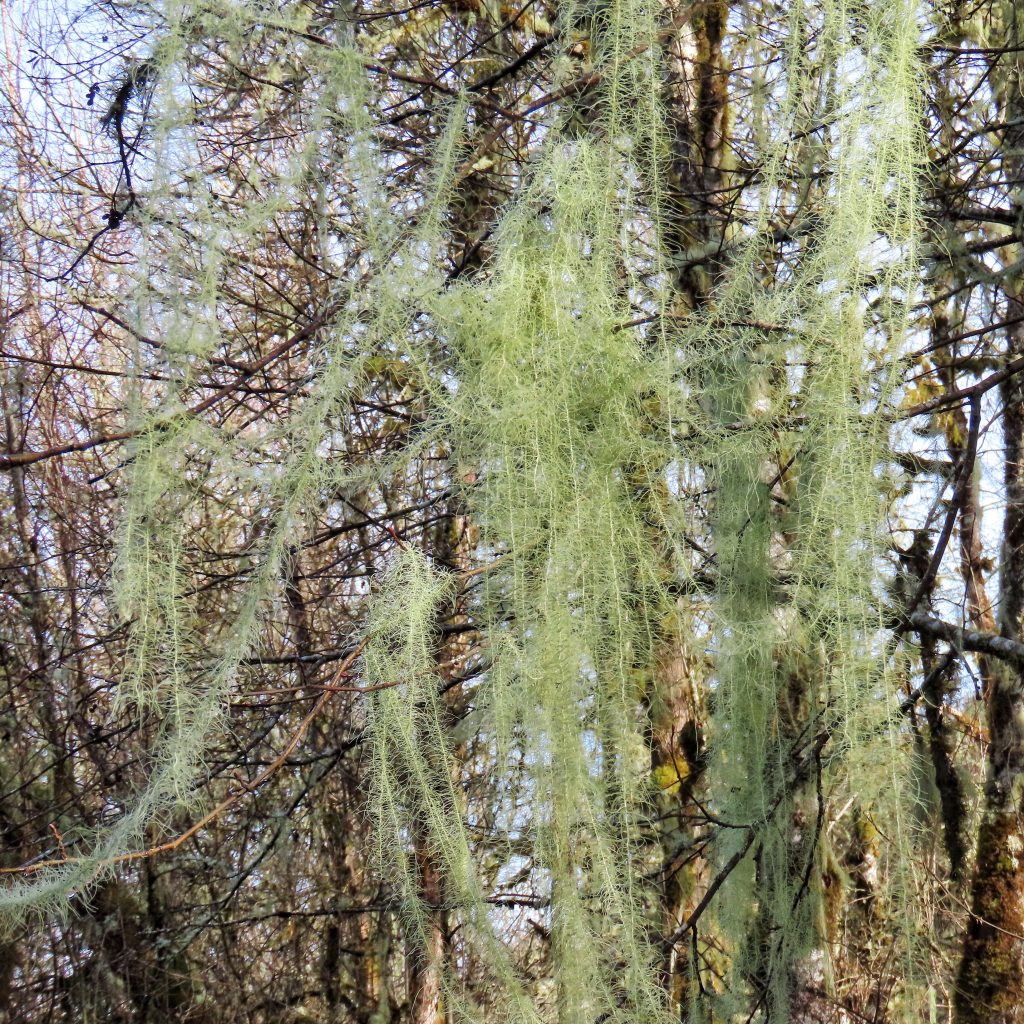
Usnea sp. are fairly easy to identify to genus because fresh specimens are stretchy! This is because they have an elastic, strong, dense, central inner cord (axis). Pendulous Usnea like Methuselah’s Beard often end up draping multiple branches, and the elasticity of the cord keeps them from breaking when the branches are moving in different directions in the wind.
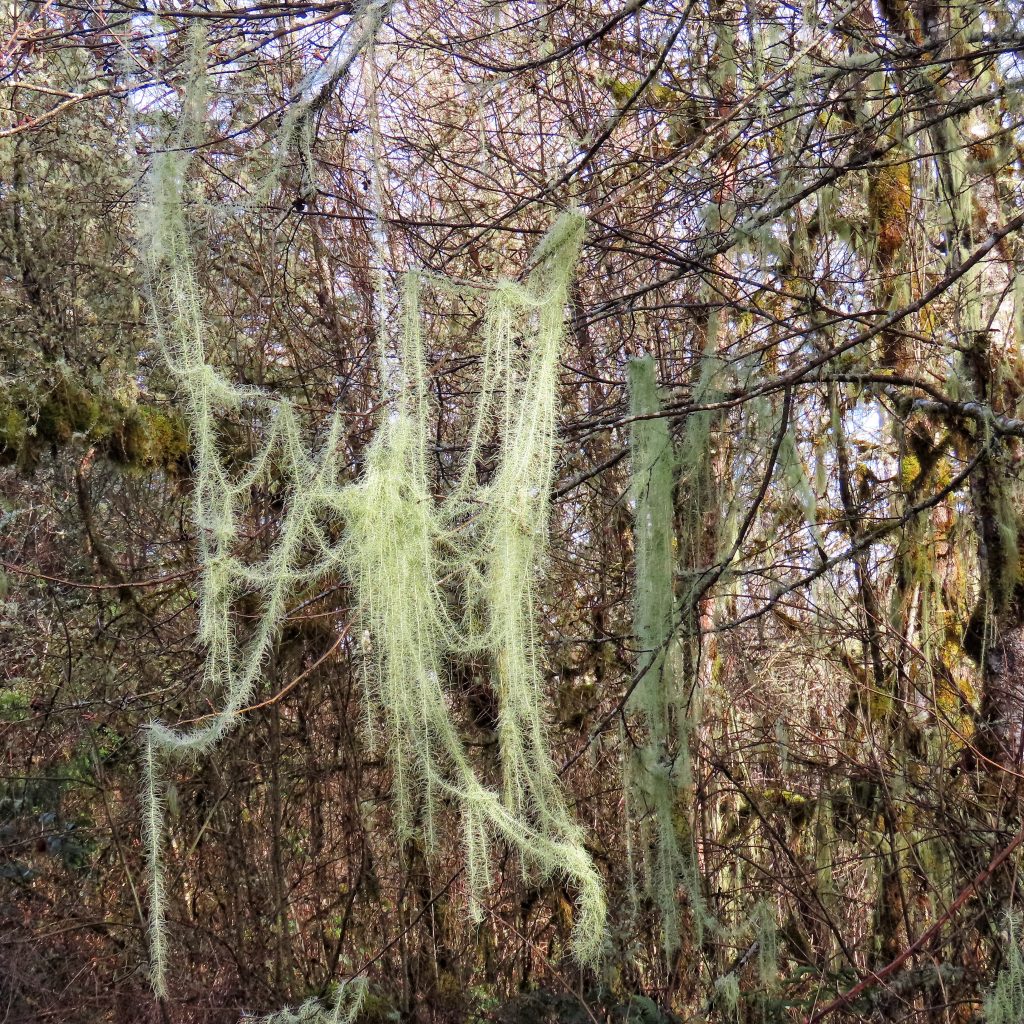
Usnea longissima used to be common and widespread in Europe and North America, but it is sensitive to air pollution and its population has declined drastically, especially in Europe. In the US it can still be found occasionally in good numbers away from population centers, although it faces other threats from collection for the floral trade. Here’s a fun fact: the original tinsel for Christmas tree decoration was made from Methuselah’s Beard (and according to David Wagner some folks call it tinsel moss for that reason, even though it is not a moss. See why I don’t like common names?)
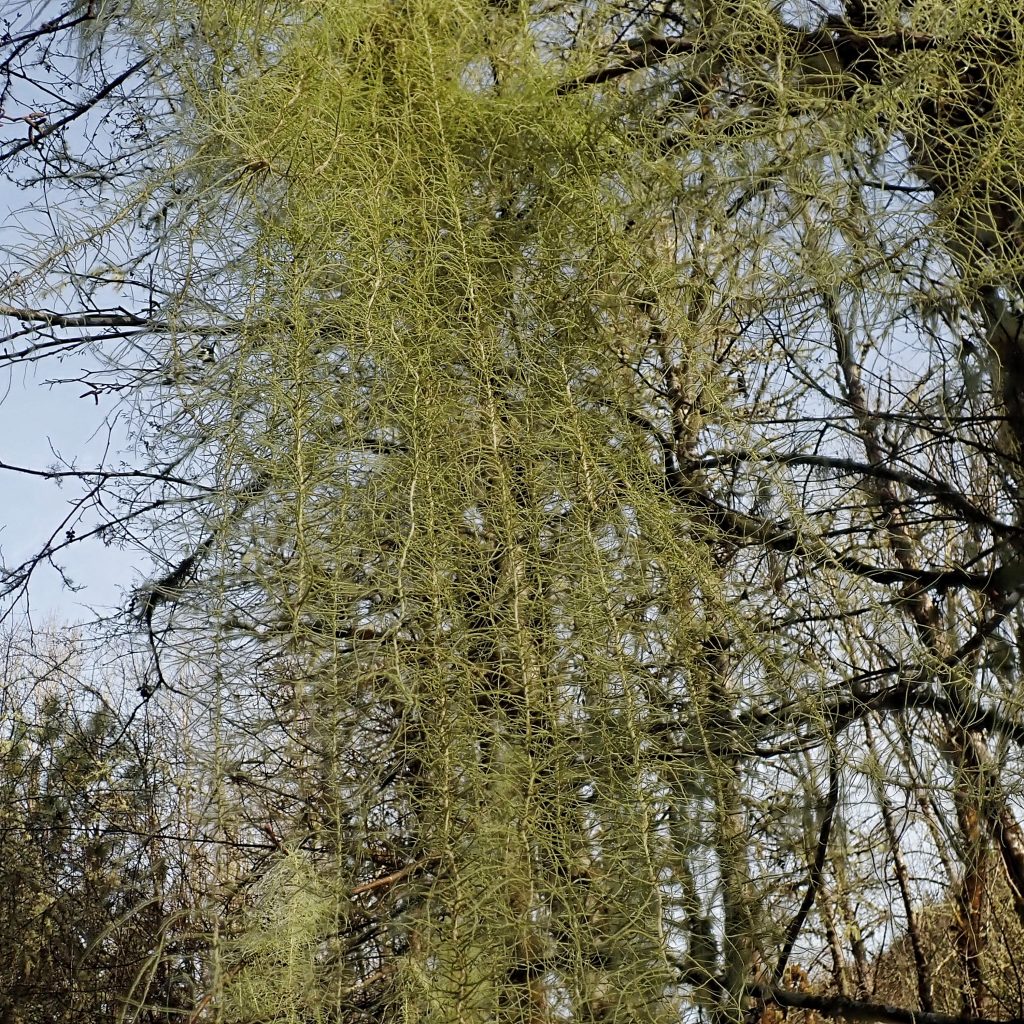
One of the biggest reasons that collecting it is so problematic is that it has limited means for dispersal. It lacks apothecia and isidia, and soredia are only rarely present. It spreads by pieces, usually the fibrils, that have broken off, and, due to its arboreal nature, changes are slim that one of them will land in a suitable spot for propagation, or that it will travel more than 15’ from the parent organism.
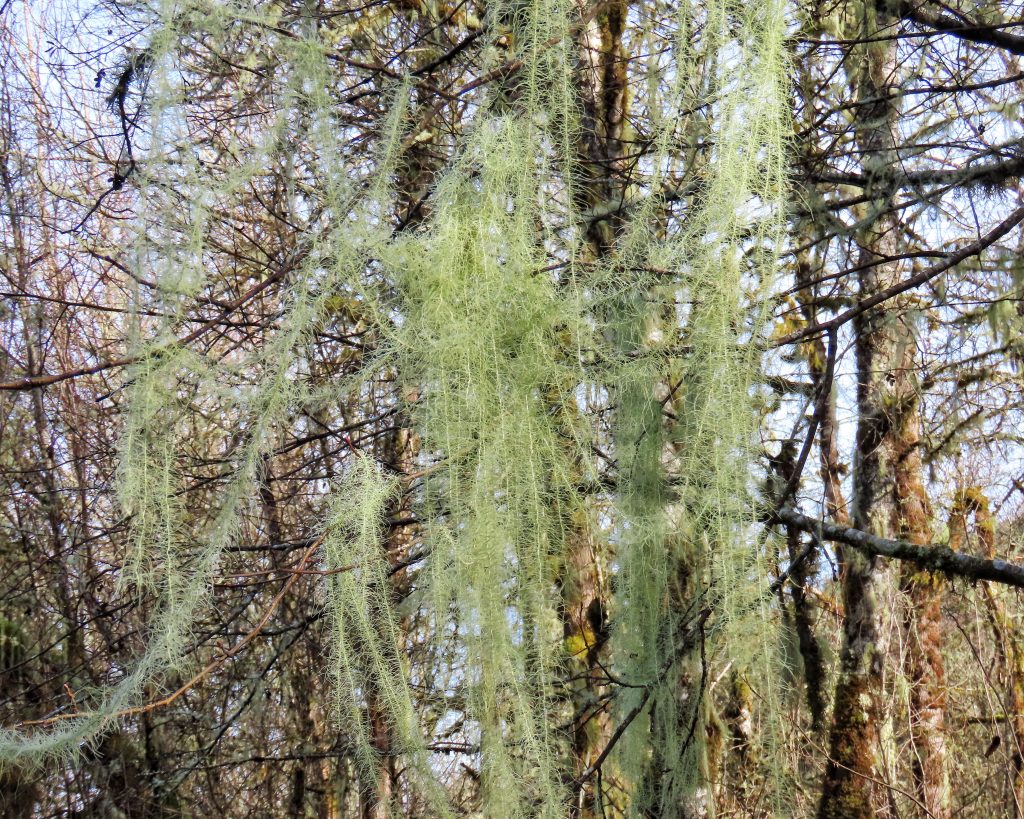
Native peoples had many uses for this lichen including diapers, bedding, and straining medicines and pitch. Herbalists, especially Chinese and Vedic practitioners, use it as an expectorant and respiratory antibiotic. But really, its numbers no longer support collection for any purposes beyond limited scientific study by experts in the field. The small piece I brought home to photograph was found as blowdown on a gravel road, and I left 90% of that where I found it.
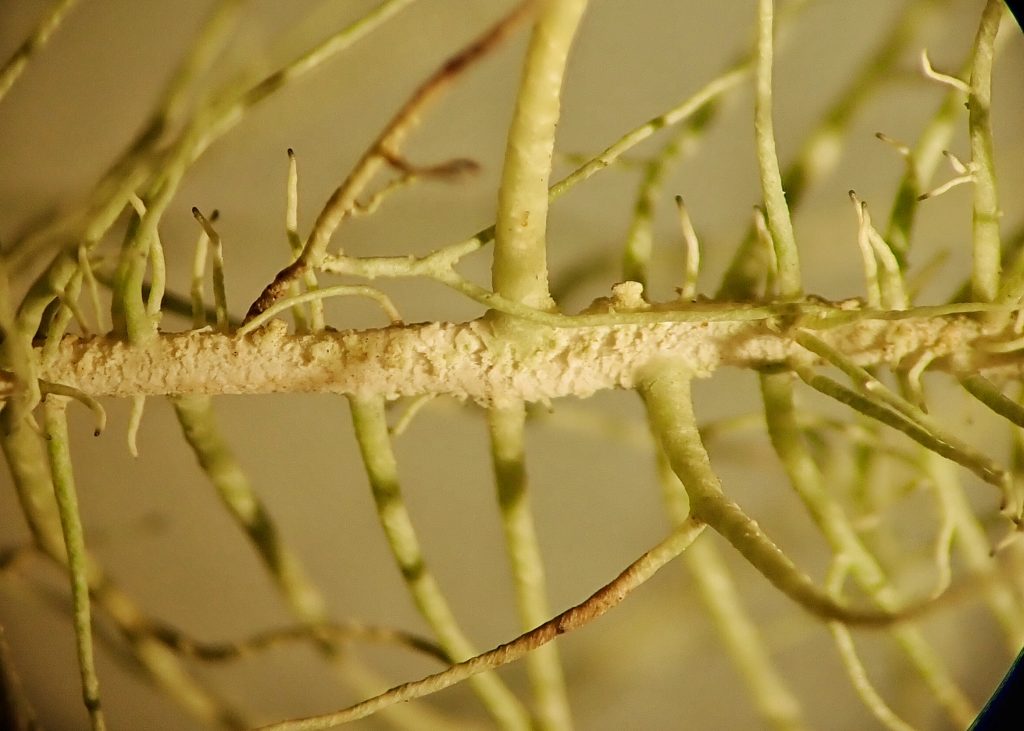
Description– Very distinctive lichen, and the only Usnea that I can identify in situ; long (up to 20’), pendulous gray green fruticose thallus; narrow, with an unbranched stem with numerous short tendrils and fibrils; the cortex of the stem scales off leaving a patchy and rough surface; lacks papillae, apothecia, isidia, and usually soredia; central cord thick and dark colored;
Similar species– This is the only unbranched Usnea with perpendicular tendrils and fibrils; some Ramalina and Alectoria may be superficially similar, but lack elastic central cord.
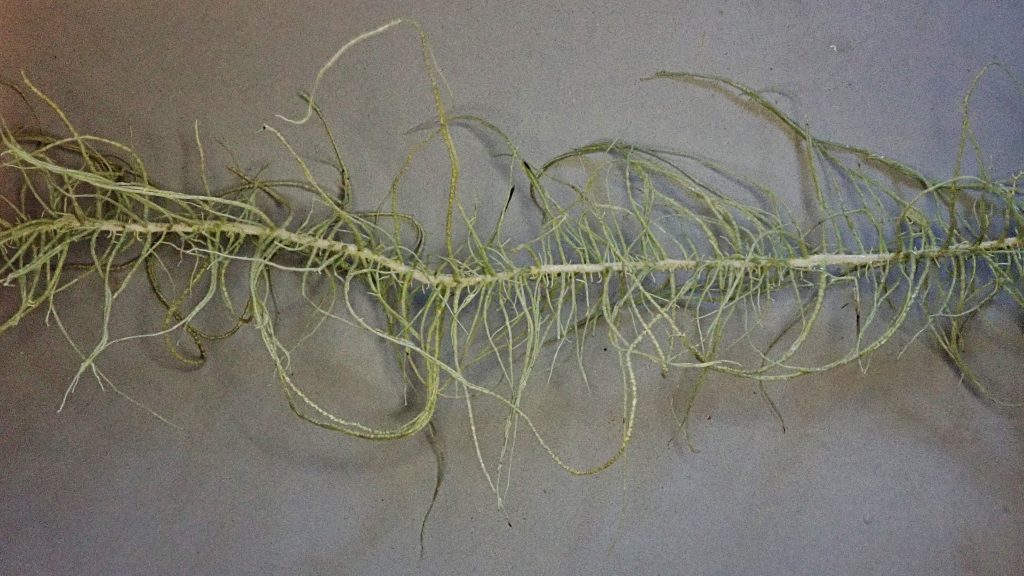
Habitat– Usually found on riparian trees; most abundant in old growth forests, but that is probably due to its limited dispersal capabilities. It has been found to do very well in reforested areas, if it is introduced into the ecosystem; most common in the transitional band between montane and foothill environments.
Range– West slope of the Cascades and in the Coast Range.
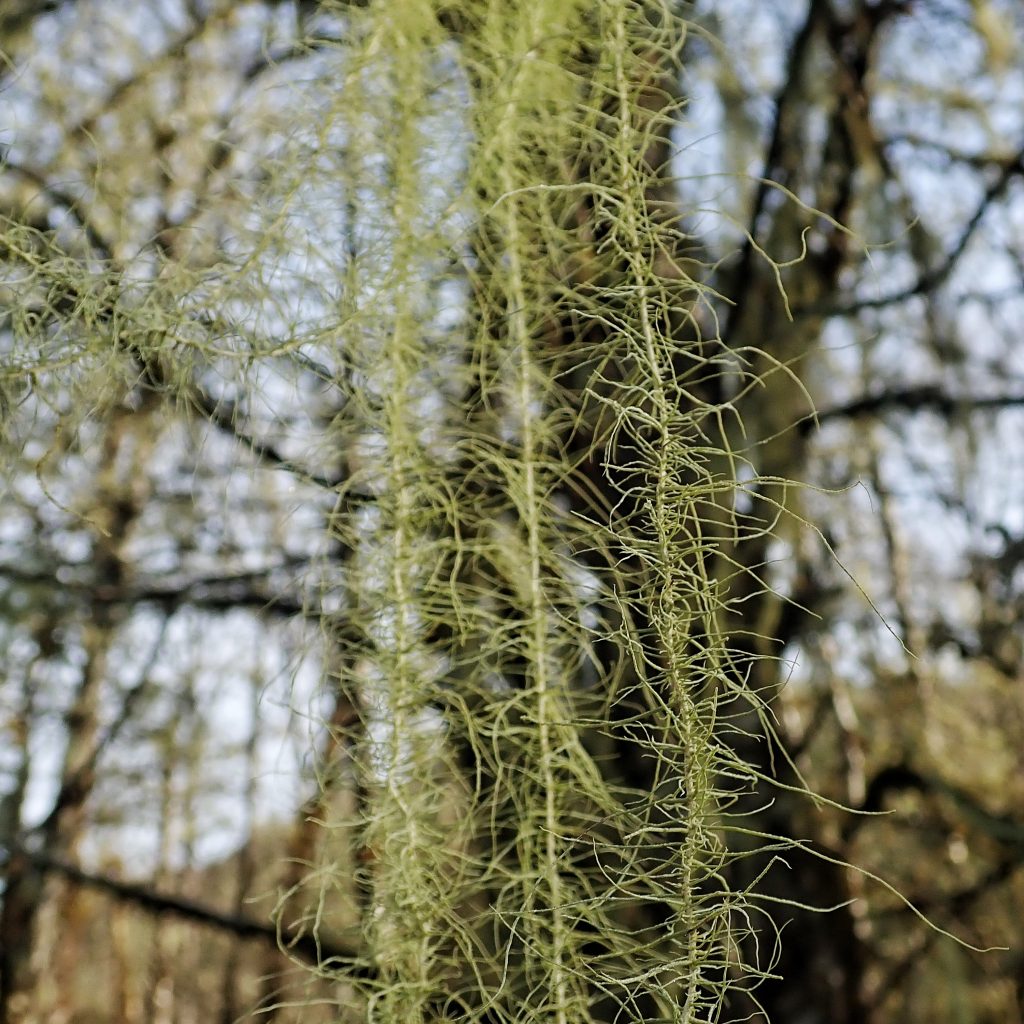
Eaten by– Used as a nesting material by some birds and terrestrial salamanders.
Etymology of names– Usnea comes from the Arabic ‘oosnah’ for moss, a common misnaming from before people understood the true nature of lichens. The epithet longissima means ‘longest’ in Latin, and is completely accurate since Usnea longissima is the longest lichen in the world.
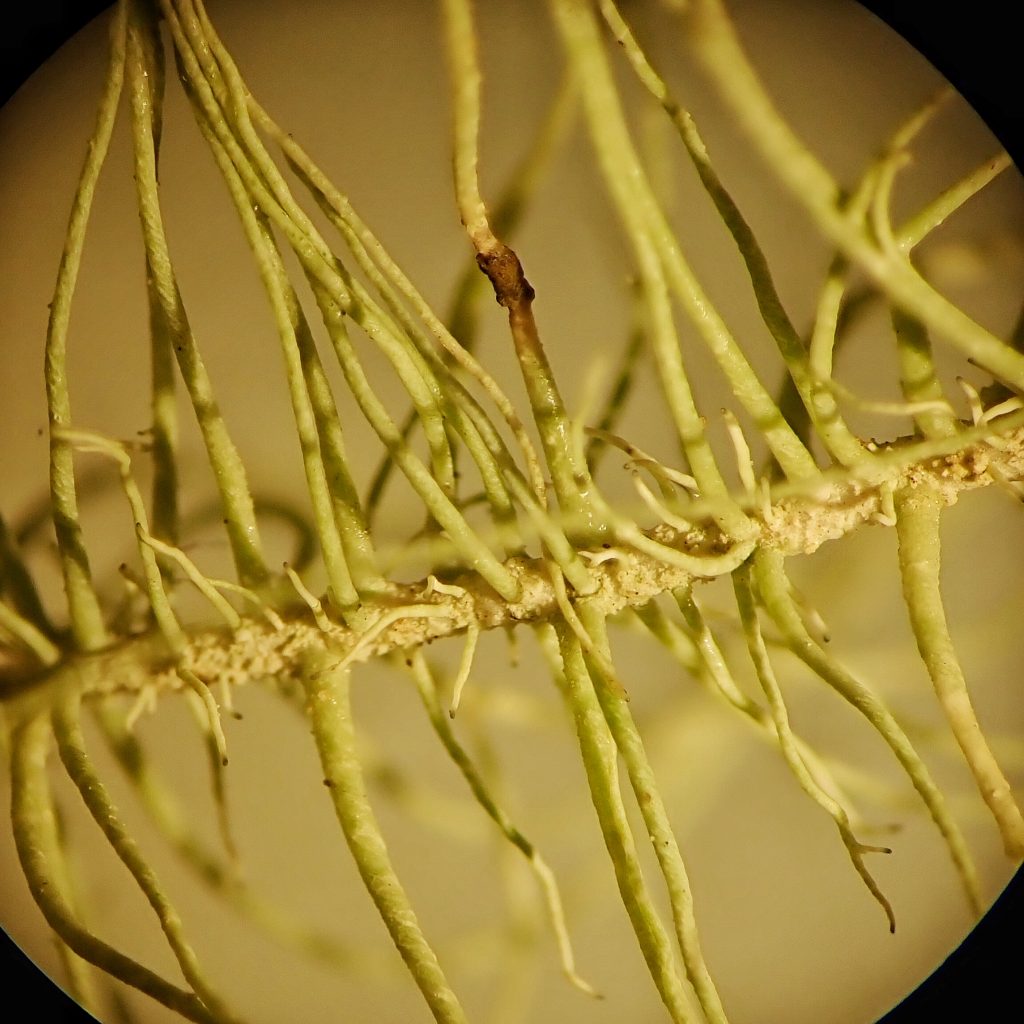
https://www.blm.gov/or/plans/surveyandmanage/files/sfs-li-usnea-longissima-2006.pdf
https://www.fs.fed.us/wildflowers/plant-of-the-week/usnea_longissima.shtml
https://www.centralcoastbiodiversity.org/methuselahs-beard-bull-usnea-longissima.html
https://www.dnr.state.mn.us/rsg/profile.html?action=elementDetail&selectedElement=NLLEC5P420
https://en.m.wikipedia.org/wiki/Usnea_longissima
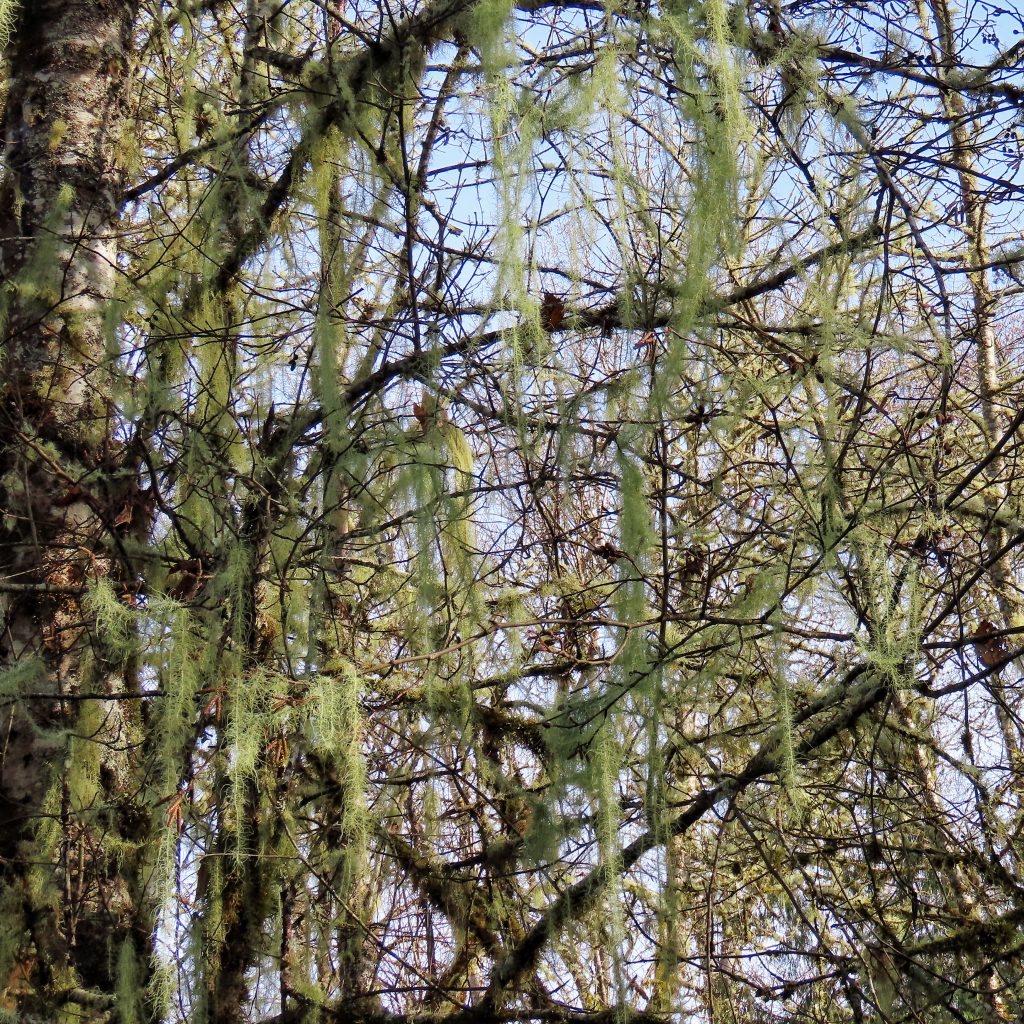
Hello:
I am a founding member of Scarabs, the Bug Society. The group is comprised of amateur entomologists, interested gardeners and naturalists, professional entomologists. I am curious to know if you provide presentations to groups and if so could the topic focus on some of the more interesting insects you have written about. We have about 20-30 members who normally attend in-person meetings but the number for the zoom meetings is generally higher. With zoom we even not have members from Japan and Utah. We normally offer a speaker fee of $100 to compensate (partially) for your time and knowledge.
You are first I’m aware of who presents in-depth info on the organisms you find. It would also be of interest if you gave a brief description of how you find such detailed information on the organisms you find.
I will be hoping for a favorable reply. We are actually planning for the 2021 season.
You seem to have an eclectic interest in natural history. You might find the presentations by Nick Zentner, Central WA University on the geology of Washington. Though my personal focus is entomology, his lectures have rekindled my old interests in geology and rocks. And I mostly just dabble in the plants and animals of Washington. So I find your column very interesting. Thanks for doing it. I know it’s a lot of work to track down the detailed info you provide.
Sharon J. Collman
WSU Extension, emeritus professor
Mountlake Terrace, WA.
206-498-3515
collmans@wsu.edu
I sent you an email. It’s from nelsondaniel 59
That IS interesting that it was the original tinsel!
These articles are so interesting!
Thanks!!
Thanks for the appreciation!
My FAVORITE!!! Perfect time to highlight the “original tinsel”. I love to show it to folks at Lake Sylvia State Park on nature walks, especially on January 1st – First Day Hike (on your own this year….). Thanks so much Dan, for the wonders you have been sharing with us! You are a treasure!
Thank you for your kind words! It is a labor of love to be sharing it!
Do you mind if we share with the Master Gardeners of Grays Harbor & Pacific counties? They know I’m crazy about Usnea…. (My husband calls it “Fuzznia” 😁)
That’s great! Feel free to share with anyone you like. I’m flattered and honored!
Thanks!
Dan: Super pix and commentary on Usnea. Fascinated by your quest overall. I’m responsible for programming speakers to our monthly (now virtual) meetings of the WSU Grays Harbor/Pacific County Master Gardeners. Given Covid-times, we just plan on a brisk ~30 minute presence on a Zoom with no more usually than ~30 folk online. A casual bunch with strong knowledge (as you might expect) in general botany and horticulture. No need to confine yourself to plants however, as your quest overall is a fascinating exploration of awareness to our regional ecosystems.
We meet on the 2nd Tuesday of each month (Jan 12, Feb 9, Mar 9, …) at 10am. Interested in engaging? Much thanks again for your pix and narrative.
Sounds fun! Unfortunately I am working at that time on Tuesday’s, till I can retire in two years. If you’re still interested then I would love to talk to you folks😀
Understand on the time conflicts… So, how ’bout we record (Zoom) a ~20 min interview/prezo with just you and me, which I’ll share on our YouTube channel “MG Foundation of Grays Harbor & Pacific Counties”
Did a similar recording just a couple of weeks ago with a UW prof we wanted to connect with: https://youtu.be/fHarn4bbRqY
Thoughts?
– Kelly
I’d be interested in doing that. How about I send you an email? I have your address.
And thank you for the kind words! I am very grateful for your appreciation!
Very interesting & well timed for the season! 👍